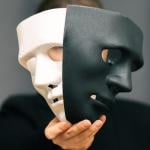WILDERNESS OF GIFT SHOPS: In which I visit the Spy Museum (so you don’t have to).
Went to the newly-opened museum yesterday, with Shamed and Russo. Remember how I said that London’s Imperial War Museum was fantastic? Remember how I said it didn’t condescend to its visitors… how it used multimedia displays really well… how I came away with tons and tons of facts and ideas to blog? Well, reverse all that stuff, and you get the Spy Museum. Even a bad museum is fun when you’re with friends; but lordy, this was a bad museum. Problems:
1) Uber-shallow. Each factoid gets about a minute’s worth of reading. The Rosenbergs? Four panels, each with about a paragraph of text. Thus the displays were divided into: the confusing ones; the boring ones; and the ones that reminded you that you’d always meant to find out more about that stuff. (If anyone can recommend a book on the Cambridge Five, let me know.) Even the latter display rarely actually taught you anything–it just served as a placeholder, a reminder that something interesting could be said about that subject.
2) Bad use of multimedia. The interactive displays at the very beginning of the museum were pretty cool–can you spot the four “dead drop” locations in this picture? But after that, when the museum delved into spy history rather than spy gadgetry or technique, the multimedia stuff seriously detracted from my enjoyment. The museum goes in big time for voice-overs, which is OK I guess if the voice-overs are related to the theme of the entire room. At the Spy Museum, however, you’d often be reading a (tiny and shallow) display about George Washington’s spies, while the voice-over babbled on about Marie Antoinette or some similarly unrelated topic. This was confusing and off-putting, and made it hard to focus. (Not that much concentration was needed, see point #1.) I prefer exhibits where you can listen to talks on headphones, from start to finish, and at your own pace and choosing. Also, unlike the Imperial War Museum (and the affiliated Cabinet War Rooms), the Spy Museum almost never used actual people telling their own stories. It relied instead on third-person, grade-school-level narration. The one place where spy-catchers did tell their own stories was in the Aldrich Ames exhibit, where a video showed a bunch of soccer moms who worked at the FBI talking about how they caught Ames. That was super-cool. More soccer moms! It would have been great to have the narrator read excerpts from George Washington’s own letters, or from “The Art of War,” or a Graham Greene novel, or other relevant texts–the implicit humility (those people are better writers than most museum designers) makes for a much more compelling museum.
3) Way too much pop culture and sentimentality. Some of this was intriguing (but again, no depth! no exploration of the topic!)–for example, the display pointing out how many literary men have been spies, or the series of displays on celebrities who also did spy work (like Moe Berg and–this I didn’t know–Josephine Baker). Those displays could have been fascinating. But they weren’t (see point #1, again); and most of the pop-culture displays were silly. There were whole rooms devoted to spy movies, TV shows, toys, and similar flotsam. We know this already. As for sentimentality, I noticed it especially in the pop pseudo-feminism of the room devoted to women spies. (Interestingly, this room made no distinction between Union and Confederate Civil War spies; the museum as a whole swung wildly between “one man’s hero is another man’s traitor” relativism and rah-rah boosterism.) The women supposedly used their “feminine wiles” and “woman’s intuition”; it sounded, from the descriptions, like they in fact relied on male naivete and the belief that women wouldn’t worry their pretty little heads about spy matters. Oh, and all the snippets (they were only snippets) read from writings by foreigners were delivered in the most atrocious accents. Um, if you’re translating friom French to English, why do you add in an idiotic “Fwaaaahhhnnce” accent to remind us the speaker is French? We’re not idiots.
4) The museum plays the classic bad-museum trick of channeling you into the gift shop on your way out. I almost got the Rat a 007 shot glass, but it was made in China, so whatever. Oh, and the museum is very expensive, especially considering that most DC museums are free. (By which I mean, taxpayer-subsidized.)
Good stuff in the museum: Some of the gadgetry was quite neat.











